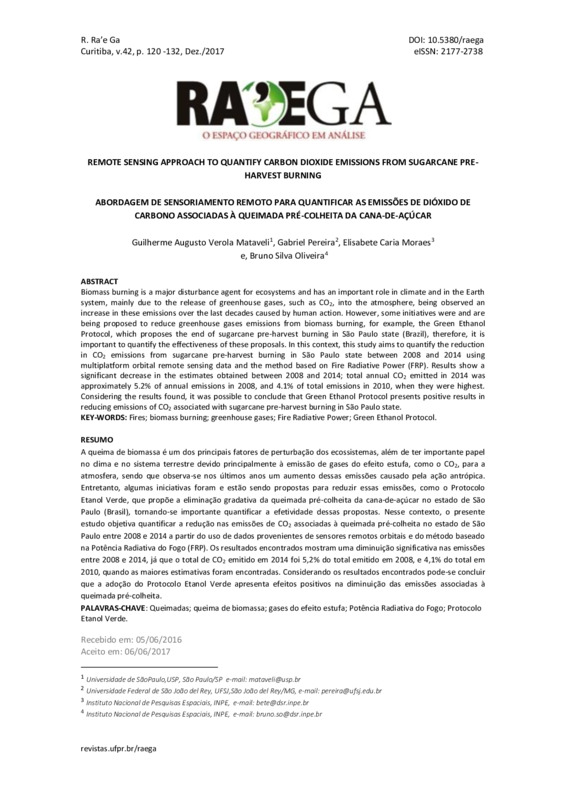REMOTE SENSING APPROACH TO QUANTIFY CARBON DIOXIDE EMISSIONS FROM SUGARCANE PREHARVEST BURNING
Item
-
Título
-
REMOTE SENSING APPROACH TO QUANTIFY CARBON DIOXIDE EMISSIONS FROM SUGARCANE PREHARVEST BURNING
-
Raega - O Espaço Geográfico em Análise
-
USP
-
UFSJ
-
Description
-
INPE
-
Autor
-
Guilherme Augusto Verola Mataveli
-
Gabriel Pereira
-
Elisabete Caria Moraes
-
Bruno Silva Oliveira
-
Assunto
-
biomassa
-
queimadas
-
radiação
-
Abstract
-
Biomass burning is a major disturbance factor for ecosystems and has an important role in climate and in the Earth system, mainly due to the release of greenhouse gases, such as CO2, into the atmosphere, being observed an increase in these emissions over the last decades caused by human action. However, some initiatives were and are being proposed to reduce greenhouse gases emissions from biomass burning, for example, the Green Ethanol Protocol, which proposes the end of sugarcane pre-harvest burning in São Paulo state (Brazil), therefore, it is important to quantify the effectiveness of these proposals. In this context, this study aims to quantify the reduction in CO2 emissions from sugarcane pre-harvest burning in São Paulo state between 2008 and 2014 using multiplatform orbital remote sensing data and the method based on Fire Radiative Power (FRP). Results show a significant decrease in the estimates obtained between 2008 and 2014; total annual CO2 emitted in 2014 was approximately 5.2% of annual emissions in 2008, and 4.1% of total emissions in 2010, when they were highest. Considering the results found, it was possible to conclude that Green Ethanol Protocol presents positive results in reducing emissions of CO2 associated to sugarcane pre-harvest burning in São Paulo state.
-
volume
-
42
-
Páginas
-
120-132
-
Date
-
2017
-
título curto
-
INPE
-
Língua
-
en
-
doi
-
10.5380/raega.v42i0.46627
-
issn
-
2177-2738
-
Rights
-
Direitos autorais 2017 Raega - O Espaço Geográfico em Análise


